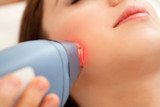The Latest Dermatology Equipment: Skin Care in 2024
The Latest Innovations in Dermatology Equipment
Table of Contents
Introduction
The Importance of Innovative Dermatology Equipment
Top Innovations in Dermatology Equipment
3.1. High-Resolution Dermatoscopes
3.2. Laser Technology Advancements
3.3. Non-Invasive Imaging Systems
3.4. AI-Powered Diagnostic Tools
3.5. Cryotherapy Devices
How Innovations Benefit Patients and Dermatologists
The Future of Dermatology Equipment
Conclusion
FAQs
1. Introduction
In today's fast-paced world, advancements in technology have revolutionized various industries, and dermatology is no exception. From cutting-edge diagnostic tools to innovative treatment devices, the latest innovations in dermatology equipment are transforming the way dermatologists diagnose and treat skin conditions. This blog post will delve into the most exciting developments in dermatology equipment, highlighting how these innovations are enhancing patient care and outcomes.
2. The Importance of Innovative Dermatology Equipment
Innovative dermatology equipment is crucial for accurate diagnosis and effective treatment of various skin conditions. These advanced tools enable dermatologists to detect issues early, provide precise treatments, and ultimately enhance the overall patient experience. By staying updated with the latest technologies, dermatologists can offer state-of-the-art care that leads to better outcomes.
3. Top Innovations in Dermatology Equipment
3.1. High-Resolution Dermatoscopes
High-resolution dermatoscopes have revolutionized the way dermatologists examine skin lesions. These devices provide magnified, detailed images of the skin, allowing for better visualization of structures and patterns. The enhanced clarity helps dermatologists distinguish between benign and malignant lesions more accurately.
Benefits: Improved diagnostic accuracy, early detection of skin cancers, enhanced patient confidence in diagnosis.
3.2. Laser Technology Advancements
Advancements in laser technology have opened up new possibilities for treating various skin conditions, including acne scars, wrinkles, and hyperpigmentation. Fractional lasers, for instance, offer precise targeting of damaged skin while leaving surrounding tissues intact, promoting faster healing and minimal downtime.
Types of Lasers: Fractional lasers, picosecond lasers, and Q-switched lasers.
Applications: Skin resurfacing, tattoo removal, treatment of vascular lesions.
3.3. Non-Invasive Imaging Systems
Non-invasive imaging systems, such as Reflectance Confocal Microscopy (RCM) and Optical Coherence Tomography (OCT), allow for real-time, high-resolution imaging of the skin without the need for biopsies. These technologies enable dermatologists to observe skin layers and structures in detail, aiding in early diagnosis and monitoring of skin conditions.
Advantages: Reduced need for invasive biopsies, real-time monitoring, detailed imaging of skin layers.
3.4. AI-Powered Diagnostic Tools
Artificial Intelligence (AI) is making significant strides in dermatology. AI-powered diagnostic tools can analyze images of skin lesions and provide dermatologists with valuable insights, including the likelihood of malignancy. These tools enhance diagnostic accuracy and speed, ensuring that patients receive timely and appropriate care.
Functionality: Image analysis, pattern recognition, predictive analytics.
Impact: Faster diagnosis, higher accuracy, improved patient outcomes.
3.5. Cryotherapy Devices
Cryotherapy, or cold therapy, is a popular treatment for various skin conditions, including warts, actinic keratoses, and certain skin cancers. The latest cryotherapy devices offer precise temperature control and improved safety features, making treatments more effective and comfortable for patients.
Technological Improvements: Advanced temperature control, safer application techniques.
Uses: Treatment of benign and malignant skin lesions, reduction of skin tags, and relief from inflammatory conditions.
4. How Innovations Benefit Patients and Dermatologists
The latest innovations in dermatology equipment offer numerous benefits for both patients and dermatologists:
Improved Accuracy: Advanced diagnostic tools enhance the accuracy of skin condition diagnoses, leading to better treatment plans.
Minimized Downtime: Innovative treatment devices, such as fractional lasers, result in shorter recovery times and minimal disruption to patients' lives.
Enhanced Patient Experience: Non-invasive imaging systems and AI-powered tools provide a more comfortable and efficient diagnostic process.
Early Detection: High-resolution dermatoscopes and AI tools enable early detection of skin cancers, improving patient outcomes.
Cost-Effectiveness: Efficient and precise treatments can reduce the number of necessary appointments, saving time and money for both clinics and patients.
5. The Future of Dermatology Equipment
The future of dermatology equipment looks promising, with ongoing research and development paving the way for even more groundbreaking advancements. We can expect to see further integration of AI, improvements in imaging technologies, and the development of more personalized treatment options. Staying abreast of these innovations will be essential for dermatologists who aim to provide the best possible care for their patients.
Potential Future Innovations:
AI-Driven Predictive Models: Enhanced algorithms for predicting treatment outcomes and disease progression.
Portable Diagnostic Devices: Development of compact, portable devices for remote diagnostics and teledermatology.
Genomic and Personalized Medicine: Equipment designed to support personalized treatment plans based on genetic profiling.
6. Conclusion
The latest innovations in dermatology equipment are transforming the field, offering improved diagnostic accuracy, advanced treatment options, and enhanced patient experiences. By embracing these technological advancements, dermatologists can deliver state-of-the-art care that leads to better patient outcomes. As we look to the future, it is clear that continued innovation will play a pivotal role in shaping the landscape of dermatology.
7. FAQs
Q1: What is the most significant recent innovation in dermatology equipment?
A1: One of the most significant innovations is the advancement in AI-powered diagnostic tools, which significantly enhance diagnostic accuracy and speed.
Q2: How do high-resolution dermatoscopes improve patient care?
A2: High-resolution dermatoscopes provide detailed images of skin lesions, aiding in early and accurate diagnosis of skin cancers and other conditions.
Q3: What are the benefits of non-invasive imaging systems in dermatology?
A3: Non-invasive imaging systems reduce the need for biopsies, provide real-time monitoring, and offer detailed insights into skin conditions.
Q4: How does laser technology benefit dermatology treatments?
A4: Laser technology allows for precise targeting of skin conditions, minimizes damage to surrounding tissues, and reduces recovery times.
Q5: What are the future trends in dermatology equipment?
A5: Future trends include the integration of AI, development of portable diagnostic devices, and advancements in personalized medicine based on genetic profiling.
Recent Posts
-
A Guide to Laser Technology in Dermatology
Laser technology has revolutionized the field of dermatology, offering precise, effective, and minim …Jul 1st 2024 -
How to Choose the Right Dermatology Equipment for Your Practice
Selecting the right dermatology equipment for your practice is crucial for providing top-notch patie …Jul 1st 2024 -
The Latest Dermatology Equipment: Skin Care in 2024
The Latest Innovations in Dermatology EquipmentTable of ContentsIntroductionThe Importance of Innova …Jul 1st 2024




